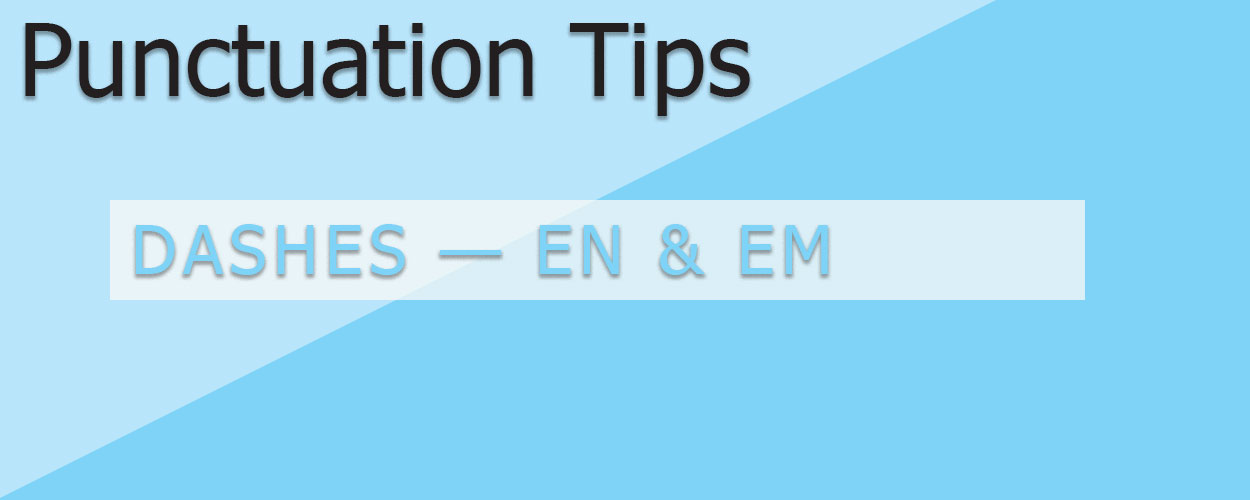

Posted: February 6, 2024
Definition: a short dash (–) used in punctuation, in particular between figures to show a range (for example, 1939–45) and a long dash (—) used in punctuation.
The dash is a mark of interruption, usually for marking asides, signalling a shift, insertion, or break. Depending on your region, you may use an en-dash (–) or an em-dash (—). Do not use hyphens as a dash; despite their similarities, hyphens have a very different use than dashes.
Some authors love using dashes for everything, but many times, they are incorrectly used. A comma could be used instead. Too many dashes, as with all things, is bad. It can make the narrative seem stilted or choppy, which you don’t want.
The main use of a hyphen is syllabication (for proofreaders), but another use is for compound words. It may also be used for number ranges in place of en-dashes (see below).
[Related article: Punctuation: The Hyphen]
An en-dash is half the width of an em-dash and is the full width of the lowercase letter n, hence the name. It is mainly used to replace the hyphen between two hyphenated words but has other uses as well.
Use an en-dash to indicate a range of page numbers, times or dates, and references.
Do not use an en-dash in place of from…to or between…and.
Use an en-dash if at least one term in a compound adjective is already hyphenated or if another term is more than one word.
An em-dash is the width of the capital letter ‘M’ hence the name. It is the most common type of dash as it is used to set of parenthetical material, to indicate a shift in tone, or other such uses. (A spaced en-dash can also be used in its place in certain regions.)
Use an em-dash in place of commas to enclose parenthetical material.
Use an em-dash to signal a break in thoughts or a shift in tone.
Use an em-dash to set off a summarizing thought or to conclude an introductory series.
Use em-dashes to enclose an element needing emphasis.
Use an em-dash to indicate an interrupted thought in dialogue.
Use an em-dash to indicate faltering speech.
Use an em-dash to introduce a name following an epigraph or quotation.
Do not use a period or comma with em-dashes.
An em-dash follows a question mark or exclamation mark (with no space) if the enclosed material contains either.
As mentioned before, using too many dashes in your writing can make it feel jumpy or breathy. Use as few dashes as possible. Try rewording sentences so other punctuation can be used.
*An exception to this rule is if you’re writing dialogue for a character who speaks in a very jumpy or choppy way. Use this only for this character to give distinction. Still be careful of overuse, as it may become aggravating to a reader, like with writing a heavy accent.
2-em-dashes are used to indicate missing letters in transcribed material. (It may also indicate a chemical bond.)
3-em-dashes are used to indicate a missing word in transcribed material, or in references. If the entire word is missing, keep normal spacing on either side. In references, end the 3-em-dash with the correct punctuation. If the middle of a word is missing, have no spaces on either side.
Aaron, J.E. & Morrison, A. The Little, Brown Compact Handbook, 5th Canadian ed. Pearson, 2013, chap 5
Judd, K. Copyediting, A Practical Guide, 3rd ed. California, CA: Crisp Learning, 2001, chap 4
Tigerpetal Press is a small book press dedicated to publishing local authors and poets.